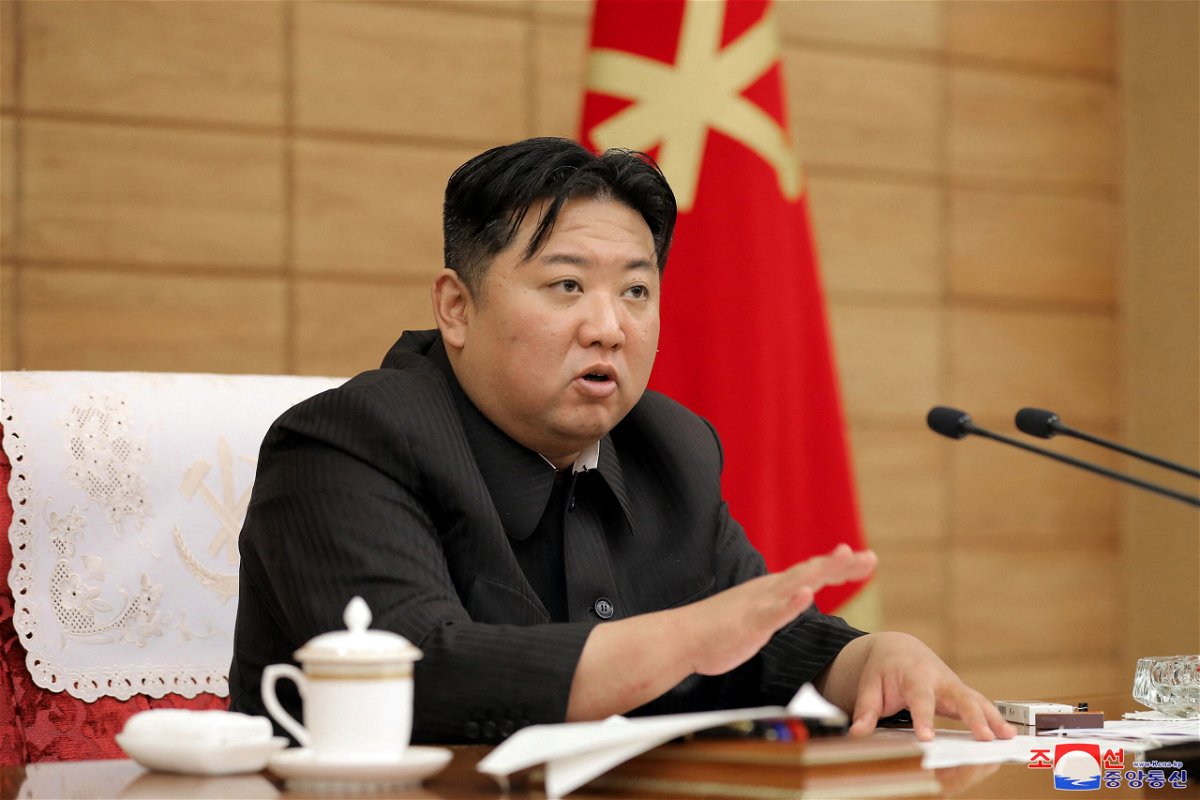North Korea tests presumed ICBM and two other missiles, South Korea says

North Korean leader Kim Jong Un is seen here on May 21. According to South Korea's Joint Cheifs of Staff
By Yoonjung Seo, Gawon Bae, Junko Ogura and Barbara Starr, CNN
North Korea tested a presumed intercontinental ballistic missile (ICBM) in one of three missile tests on Wednesday, according to South Korea’s Joint Chiefs of Staff.
The tests come on the heels of US President Joe Biden’s first presidential trip to Asia.
South Korea said the presumed ICBM was fired at about 6 a.m. local time Wednesday with a flight range of about 360 kilometers (223 miles) and altitude of approximately 540 kilometers (335 miles).
At about 6:37 a.m., the North fired a second ballistic missile — not believed to be an ICBM — which seems to have disappeared from South Korean tracking at an altitude of 20 kilometers (12 miles), South Korea said.
The third missile, presumed to be a short-range ballistic missile (SRBM), flew about 760 kilometers (472 miles) and had an altitude of 60 kilometers (37 miles), the South Korean JCS added.
Intelligence authorities from South Korea and the United States are analyzing the tests for further details, the JCS said.
Missile expert Jeffrey Lewis, director of the East Asia Nonproliferation Program at the James Martin Center for Nonproliferation Studies, said Wednesday’s test was not likely of a full ICBM, because the range was well short of what that type of missile would travel.
Lewis said Wednesday’s test was similar to past tests that the US has claimed are related to development of a new ICBM.
The Pentagon said in March that two North Korean ballistic missile tests conducted on February 26 and March 4 were not intended to demonstrate ICBM range or capability, but were “likely to evaluate this new system before conducting a test at full range in the future, potentially disguised as a space launch.”
Japan also reported at least two missiles fired from North Korea, with one of those flying in an “irregular trajectory” at a distance of about 750 kilometers (466 miles), Japanese Defense Minister Nobuo Kishi said.
Kishi said that missile landed just outside of Japan’s Exclusive Economic Zone (EEZ).
In response to North Korea’s latest tests, South Korea and the US each fired a missile into the sea off the Korean Peninsula, the JCS said. A US military statement confirmed those launches.
“It demonstrated that our military has the ability and readiness to precisely strike the origin of provocation with our overwhelming force,” the JCS added.
The South Korean air force also conducted an “elephant walk” on Wednesday, taxiing some 30 F-15K armed fighter jets on the runway as a show of strength, the JCS said.
Last week, a US official warned that North Korea appeared to be preparing for an ICBM test during Biden’s trip, after satellite imagery revealed activity at a launch site near the capital, Pyongyang.
Biden met with South Korea’s new President Yoon Suk Yeol over the weekend, where the two leaders said they would begin exploring an expansion of joint military drills between their countries.
When asked whether he would meet with North Korean leader Kim Jong Un, Biden said it would “depend on whether he’s sincere and whether he’s serious.”
To date, Biden’s strategy has yet to yield a working meeting with North Korea in the year since the administration completed a review of the US policy toward the hermit kingdom, a senior administration official said, adding that “it has not been for lack of trying.”
Meanwhile, Yoon said South Korea and its allies stand ready for any acts of North Korean provocation.
Last month Kim vowed to “strengthen and develop” its nuclear forces at the “highest possible” speed.
The latest launches mark the 16th time that North Korea has tested its missiles this year, including what the US believes was a failed ICBM test on May 4 that exploded shortly after launch.
But North Korea is thought to have tested an ICBM in late March.
That missile flew to an altitude of 6,000 kilometers (3,728 miles) and a distance of 1,080 kilometers (671 miles) with a flight time of 71 minutes before splashing down in waters off Japan’s western coast, according to Japan’s Defense Ministry.
US military and intelligence agencies assess Pyongyang may also be preparing for its first underground nuclear test in nearly five years.
On Wednesday, South Korea reported it had detected signs the North is testing a nuclear weapon detonation device, something that could be a precursor to a nuclear test.
South Korea’s first deputy director of the National Security Office, Kim Tae-hyo, told reporters North Korea could be “near the last preparation stage for a nuclear test of a scale and performance it wants.”
Kim said he cannot predict when such a test could be conducted, but thought the chances it would take place in the next day or two were low.
North Korea conducted the last of its six underground nuclear tests in 2017.
The-CNN-Wire
™ & © 2022 Cable News Network, Inc., a WarnerMedia Company. All rights reserved.
CNN’s Jeremy Diamond, Jake Kwon, Brad Lendon, Oren Liebermann, Kevin Liptak, Jessie Yeung and Paula Hancocks contributed reporting.